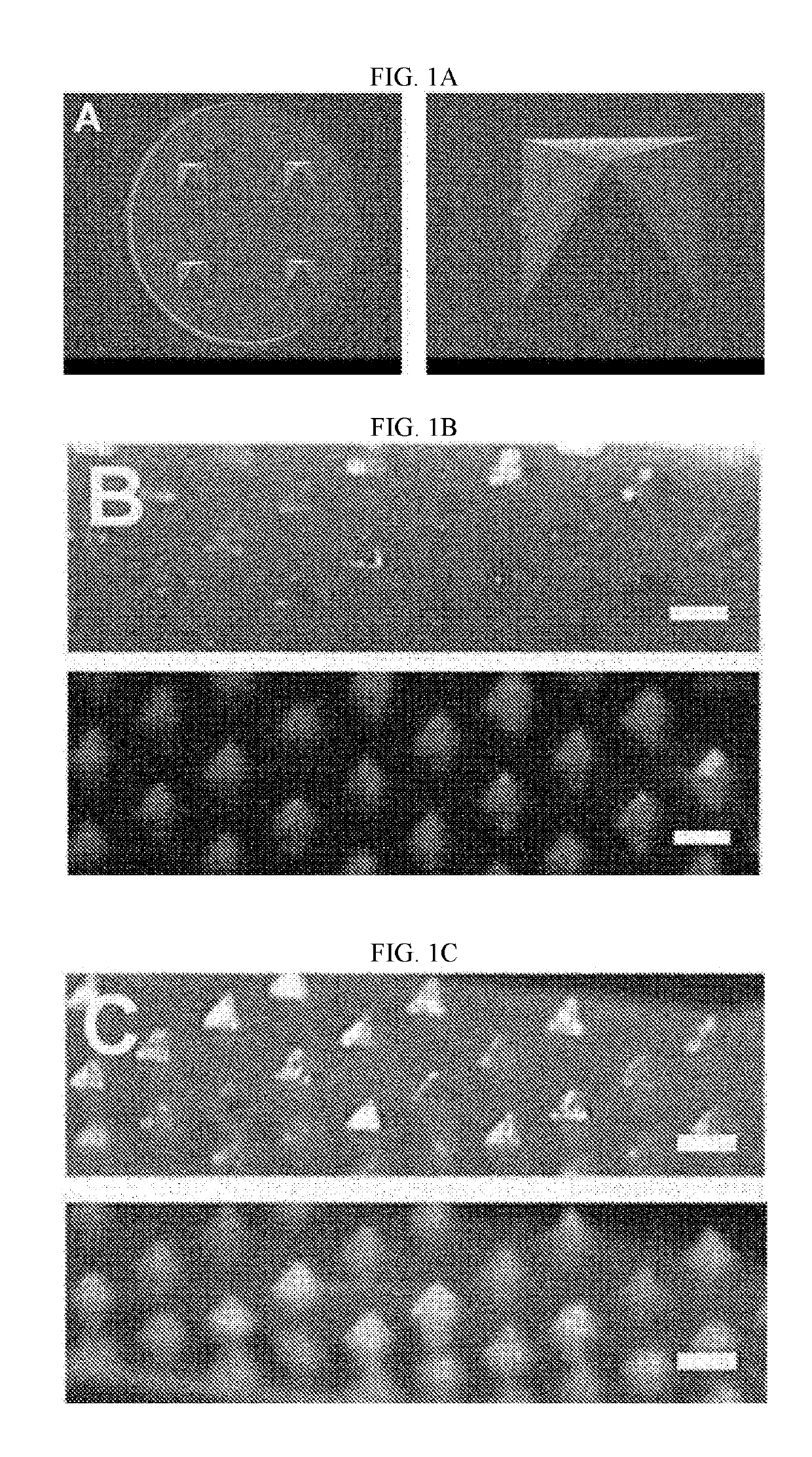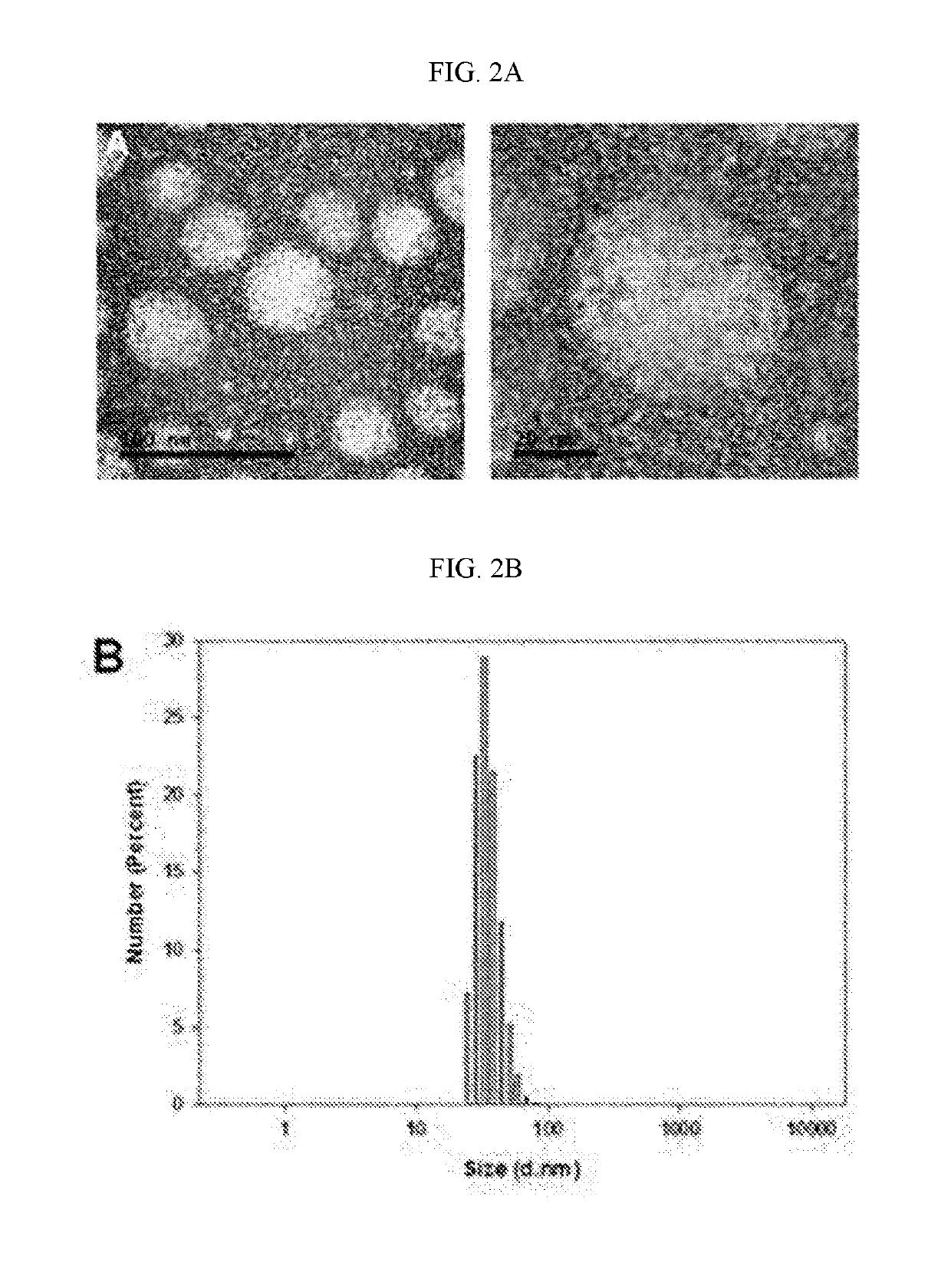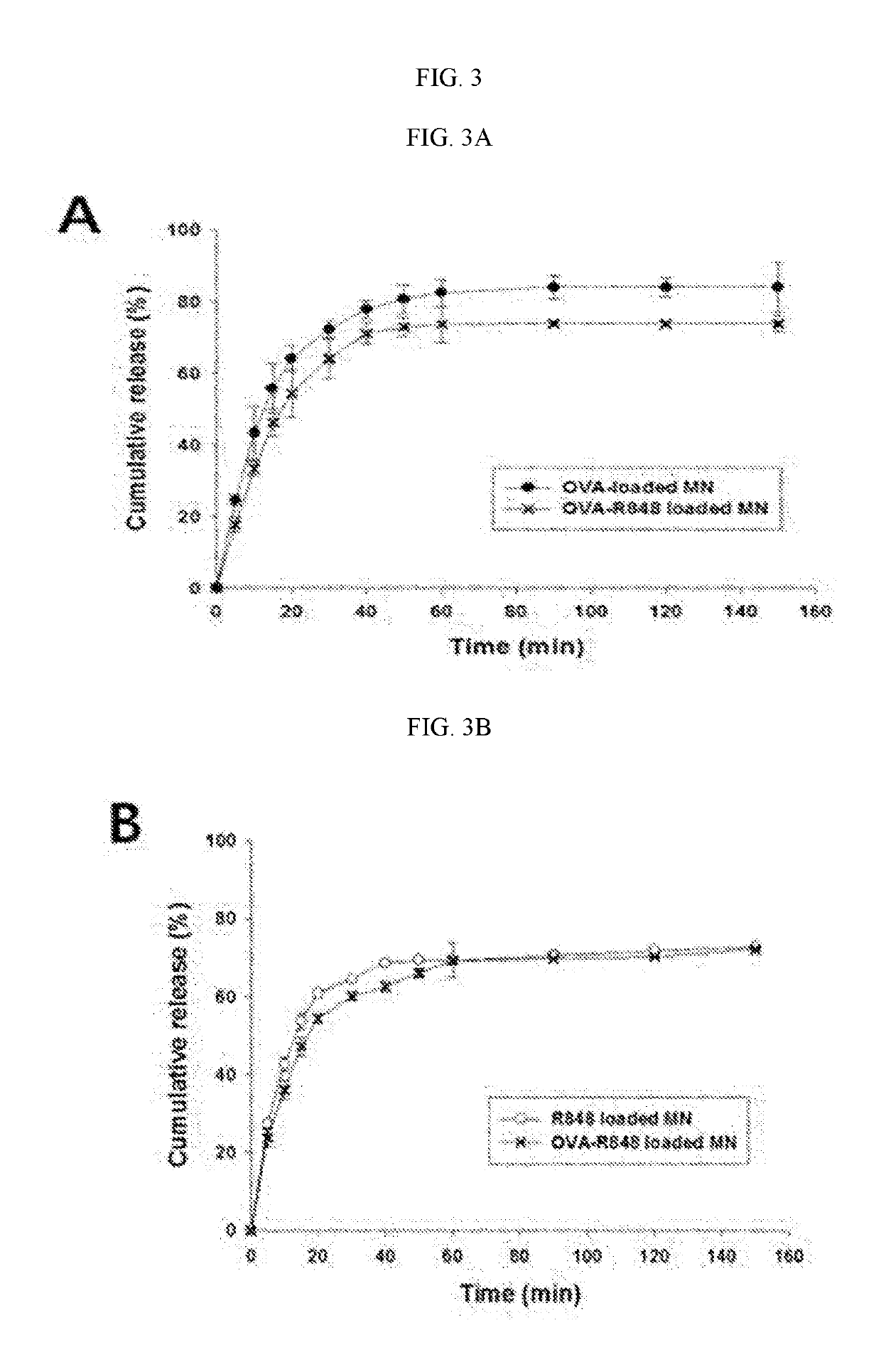Self-assembled nanoparticle releasing soluble microneedle structure and preparation method therefor
a nanoparticle and soluble technology, applied in the direction of prosthesis, genetic material ingredients, antibody medical ingredients, etc., can solve the problems of pain and inflammation, difficulty in injection, and difficulty in delivering the needle for direct hypodermic injection, so as to improve the efficiency of simultaneous delivery and facilitate the delivery of water-soluble. , the effect of increasing the solubility in aqueous solution
- Summary
- Abstract
- Description
- Claims
- Application Information
AI Technical Summary
Benefits of technology
Problems solved by technology
Method used
Image
Examples
example 1
re of Microneedles
[0065]After a tri-block copolymer, Pluronic F127, was dissolved in ethanol to the final concentration of 15%, a solution in which a hydrophobic molecule was dissolved in ethanol (1,1′-dioctadecyl-3,3,3′,3′-tetramethylindodicarbocyanine iodide (DiD) or Resiquimod (R848)) was uniformly mixed, and then an ethanol solvent present in the solution was removed using a rotary evaporator.
[0066]A film was obtained, the remaining solvent was completely removed by evaporation using nitrogen, a previously prepared aqueous solution containing polyethylene glycol (PEG MW 6000) and a hydrophilic molecule, OVA, was added to the film, and the film was uniformly dispersed in the aqueous solution using a sonicator, followed by filtering the aqueous solution to remove an undissolved material.
[0067]Soluble microneedles were manufactured by injecting 0.15 ml of the aqueous solution into a reusable negative-patterned template for a polydimethylsiloxane (PDMS) microneedle, which has a size...
example 2
on of Microneedles
[0069]Spherical micelle-type self-assembled nanoparticles can be formed in an aqueous solution using the Pluronic F127 used in Example 1 as an amphiphilic tri-block copolymer (see the description on the polymeric micelles of FIG. 2A).
[0070]A paraffin film (Parafilm®) was placed on a Styrofoam support, microneedles were applied and then pressed vertically, and then the film and the microneedles were separated from the Styrofoam support. Afterward, the film perforated by the microneedles and the microneedles were floated on the water surface in a Petri dish (Ø=30 mm) containing 500 μl of distilled water to dissolve the microneedles, and 30 minutes later, the corresponding solution was taken and then dried on a TEM grid (formvar coated). As a result, as shown in FIG. 2A, formation of spherical particles could be confirmed using a transmission electron microscope.
[0071]In addition, as shown in FIG. 2B, it was observed that the size of a micelle in the solution analyzed...
example 3
rofiles for OVA and Resiquimod (R848)
[0072]To observe the profiles of releasing OVA and Resiquimod (R848) from the soluble microneedles manufactured by the method of Example 1, the soluble microneedles were put into phosphate buffered saline (PBS, pH 7.4), stored at 37° C., and then a sample was obtained at predetermined intervals (0, 1, 2, 3, 4, 5, 10, 20, 30, 60, and 90 minutes), followed by replacement with the same volume of a new release solution.
[0073]As a result, as shown in FIG. 3A, an OVA release profile from each of OVA only-containing microneedles (OVA-loaded MN) and OVA / R848-containing microneedles (OVA-R848 loaded MN) was able to be identified by the bicinchoninic acid (BCA) assay (micro plate reader, Multiskan GO, Thermo Fisher Scientific, Vantaa, Finland) at 590 nm.
[0074]In addition, the absorbance with respect to R848 was calculated and quantified at 327 nm using a UV-Vis scanner (TECAN Infinite M500 microplate reader), confirming that, as shown in FIG. 3B, an R848 r...
PUM
| Property | Measurement | Unit |
|---|---|---|
| diameter | aaaaa | aaaaa |
| micelle diameter | aaaaa | aaaaa |
| micelle diameter | aaaaa | aaaaa |
Abstract
Description
Claims
Application Information
 Login to View More
Login to View More - R&D
- Intellectual Property
- Life Sciences
- Materials
- Tech Scout
- Unparalleled Data Quality
- Higher Quality Content
- 60% Fewer Hallucinations
Browse by: Latest US Patents, China's latest patents, Technical Efficacy Thesaurus, Application Domain, Technology Topic, Popular Technical Reports.
© 2025 PatSnap. All rights reserved.Legal|Privacy policy|Modern Slavery Act Transparency Statement|Sitemap|About US| Contact US: help@patsnap.com



